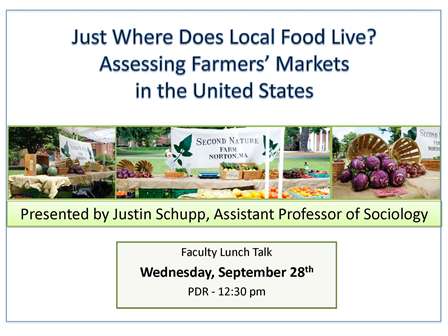Just where does local food live? Assessing farmers’ markets in the United States
Participation in the local food movement has grown dramatically in the United States, with the farmers’ market being one of its most widespread and heavily promoted forums. Proponents argue that the interactions and transactions that occur at farmers’ markets benefit market participants, but, more importantly, have broader benefits for the neighborhoods they are located in and for society itself. The promise of these benefits raises several important questions, notably: where are farmers’ markets located and who has access to them? Using data from the USDA and US Census, this work explores the location of farmers’ markets areas across several geographic measurements, including at the national, census division, and census tract levels. Results reveal the following: 1) Perhaps not being as white of a movement as critics have suggested, farmers’ markets are almost exclusively a middle to middle-upper class phenomenon; and 2) Farmers’ markets are very unlikely to be found in neighborhoods with lower than average socio-economic statuses indicators, in specific divisions of the US, and in rural areas.
Please join us for the next Faculty Lunch Talk presented by Justin Schupp, Assistant Professor of Sociology:
Wednesday, September 28th
12:30 p.m. – 1:30 p.m.
President’s Dining Room

-
Categories:
- Provost